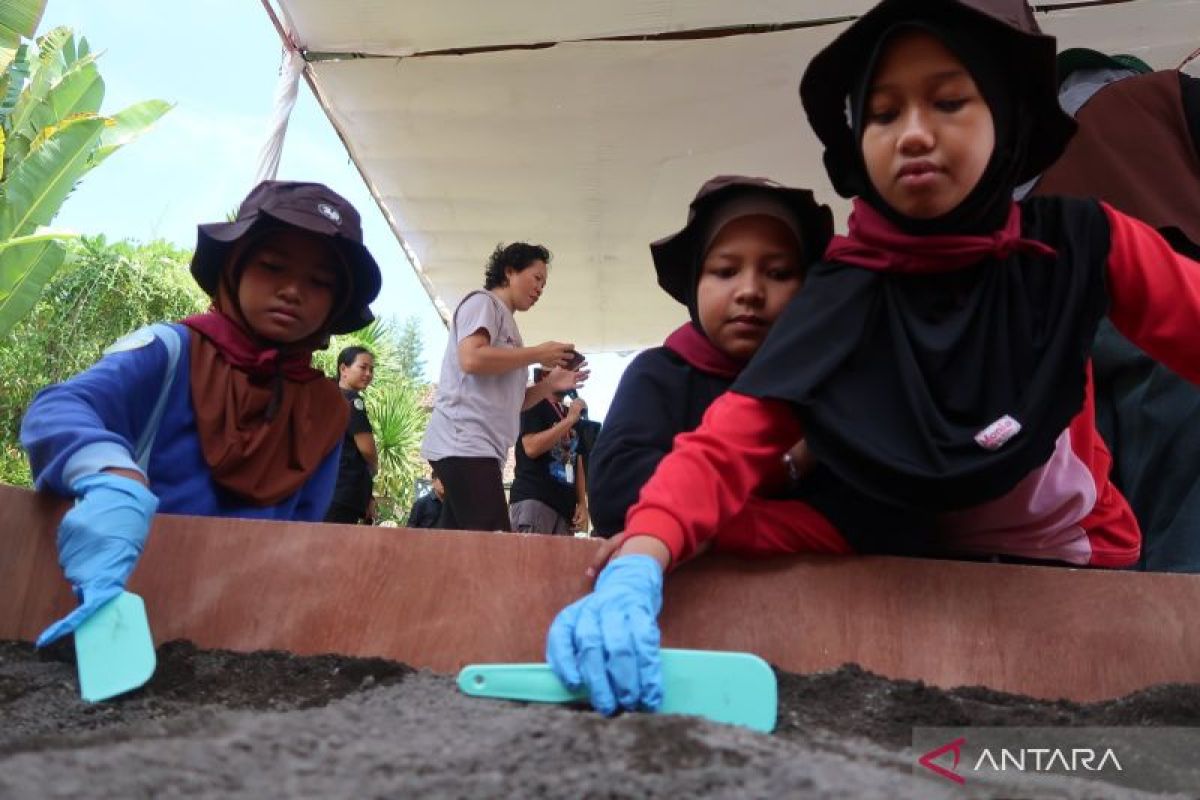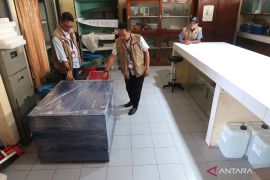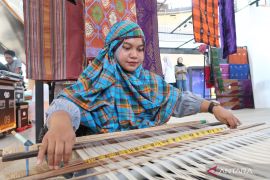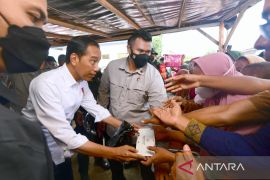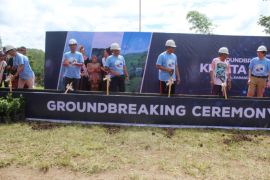Mataram, W Nusa Tenggara (ANTARA) - Dressed in sportswear, at least 25 primary school students made a morning excursion to the West Nusa Tenggara (NTB) Public Museum in Mataram City, the province's capital, for a deep dig into history.Upon reaching the museum, Naura Sauzan Karima, 10, put on blue rubber gloves.
Because of her tiny fingers, she found it hard to put on adult-sized gloves. Eventually, she had to ask her mother for help. Naura and 24 other students from seven schools in Lombok, one of the main islands of West Nusa Tenggara, were participating in the " Let's Learn Together, Young Archaeologists" activity.
The activity was organized by the NTB Museum in collaboration with the Indonesian Archaeologists Association (IAAI). For the activity, six square excavation boxes, measuring 100x100 centimeters (cm) and filled with sand and coral, were placed in a tent. The thickness of the boxes ranged between 20 to 30 cm. Several small archaeological objects were buried in the boxes.
The students were given simple excavation tools like plastic spatulas and brushes to excavate buried objects of historical and cultural value.
Naura, a student from public elementary school SDN 5 of North Masbagik in East Lombok district, which lies 47 kilometers away from the NTB Museum, joined other students in exploring the excavation box labeled "E".
The committee had divided the excavation area to allow the students space to do the activity.
The process was slow. The students were taught how to carefully brush off the sand layer by layer with the hope of unearthing archaeological objects or artifacts intact, that is, without damage.

Naura, who is currently in the fourth grade, was assigned to the northern area of the site. However, she did not find any objects there, so she moved to the western area.
There, she found bones. Under the excavation box E, a jug of jewelry was found. Some students found fossils of coral reefs and sea shells in another box. Some found black rice and charcoal.
The discovery of human skeletons and jewelry indicated that the site was a prehistoric tomb. In ancient times, bodies were often buried with jewelry. Wealth was considered a provision to enter other realms.
The discovery of coral reefs and sea shells indicated that the excavation area used to be a sea that dried up due to geological activities. Meanwhile, the discovery of black rice and charcoal indicated that the excavation area had burned or been buried by volcanic materials.
Baca juga: Indonesia bags eight medals at IESO 2024
With these discoveries, the young students learned about the profession of archaeologists who play a big role in uncovering the history of past human civilizations. In fact, some, like Naura, expressed their interest in becoming archaeologists.
The NTB Museum held the young archaeologist activity for two days on October 22 and 23, 2024. The first day was for elementary school students, and the second day was reserved for junior high school students.
Full picture
The excavation process, which lasted about 45 minutes, gave the children real insights into and a three-dimensional picture of excavating ancient relics.
The items they found were arranged according to type and use. They also recorded their findings in detail on a sheet of paper.
After the excavation was completed, each team was asked to present their findings in front of other participants. Then, they were invited into the exhibition room to see the collection of ancient artifacts that are neatly stored at the NTB Museum.
Efraim Tefa, 58, a biology and social science teacher from Altehia Christian Elementary School of Mataram, said that the learning method at school, which involves using textbooks or watching movies, does not shed much light on how archaeologists work in the field.
By participating in the activity, young students got a good picture of an in-field excavation activity. They did not need to imagine the excavation process, but used their hands skilfully to patiently scrape back layers of sand.
When asked about their aspirations, most of the time, the children would say they wanted to become doctors, police officers, soldiers, or astronauts. Now, the young archaeologist activity has inspired them to become archaeologists.
High hopes
The IAAI recognizes the rich history and culture of Bali, West Nusa Tenggara, and East Nusa Tenggara, also known as the Lesser Sunda Islands Ecoregion.
Baca juga: Inclusive module devised for educational equity: Ministry
However, the number of archaeological researchers in the region is just about 170. Many of them are now old, retired, and physically unable to conduct research.
The Wallace Line, which is located in the Lombok Strait, separates the ecozones of Asia and Australia.
Archaeologists have found ceramics, stoneware, pottery, and porcelain in the Lesser Sunda region that are believed to have been used in rituals in the past.
The rich history and culture of the region provide great opportunities for archaeologists to conduct research or excavation.
Now, the young aspiring archaeologists have raised hopes that research on both the prehistoric era and human history in the region will continue.


